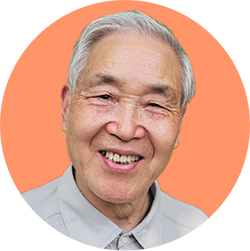I had the pleasure of attending the Pioneer Network Annual Conference in Louisville recently along with a SafelyYou colleague. The Pioneer Network describes itself as “the national leader of the culture change movement, helping care providers to transition away from a medical, institutional model of elder care to one that is life affirming, satisfying, humane and meaningful.” There was an energy in the air unlike most conferences I’ve attended which clearly stemmed from the shared passion for improving the way we care for our elders by exploring practical ways to implement person-centered care. Many attendees were moved to tears in the group sessions, and conversations in the expo hall buzzed with a contagious vitality.
There also was an underlying theme in the subject matter of the sessions and the resulting conversations centered around how exactly to put these concepts into practice. The drive to promote culture change in health care and elder care has been around for years. Most people that work in senior living communities are drawn to this line of work because they genuinely enjoy caring for elders. It’s a tough job and not everyone has the empathy it takes to give of themselves physically and emotionally to people outside of their own families; often to people that are not able to say, “thank you.” While we can all get behind the ideals of the culture change movement, putting them into practice in an industry regulated by strict state mandated laws and fearful of litigation is a major challenge to say the least.
The Pioneer Network suggests that this is a process that requires “changes in fundamental organizational and individual beliefs and philosophies, in practices, in physical environments, in relationships at all levels and in workforce models.” A critical component of the shift in our care culture is including the people that interact most closely with older adults in a caregiving role. Staff that are most hands-on with older adults need to be empowered to think and act beyond the “regs” and checklists that are so prominent in care homes. But how exactly do we accomplish this without breaking the rules? How should managers support and encourage care partners to see the individual person’s needs and respond to them while also completing a long list of tasks and responsibilities?
I spoke to a particularly passionate and accomplished Memory Care Director about the practicality of enacting culture change and questioned her about specifically what has worked in her community. She feels that the more questions you ask the elder and the people that know them is the best way to uncover details about the resident’s life and will lead to providing the best care experience for a particular individual. If it’s truly “person-centered” care, we need to know more about the person. For example: what foods do they love/hate and why? Is there a story behind a particular food item? Does that story tell us more about the person, their family or professional life, their cultural traditions or geographical heritage? She also made a strong point about how in senior living communities, the hands-on caregivers often know more about the residents than we think, and managers need to not only give permission, but encourage their staff to get to know their residents and share that information.
I’ve followed the Culture Change movement for over 10 years and strides are definitely being made. There are some inspiring communities and organizations pushing the boundaries of what elder care can be! I think many of us have a long way to go in our efforts to change the paradigm of care from institutional to person-centered, and I’m glad to know there are so many people out there that get up every day and put forth the effort. Check out some Culture Change success stories highlighted by the Pioneer Network here.





